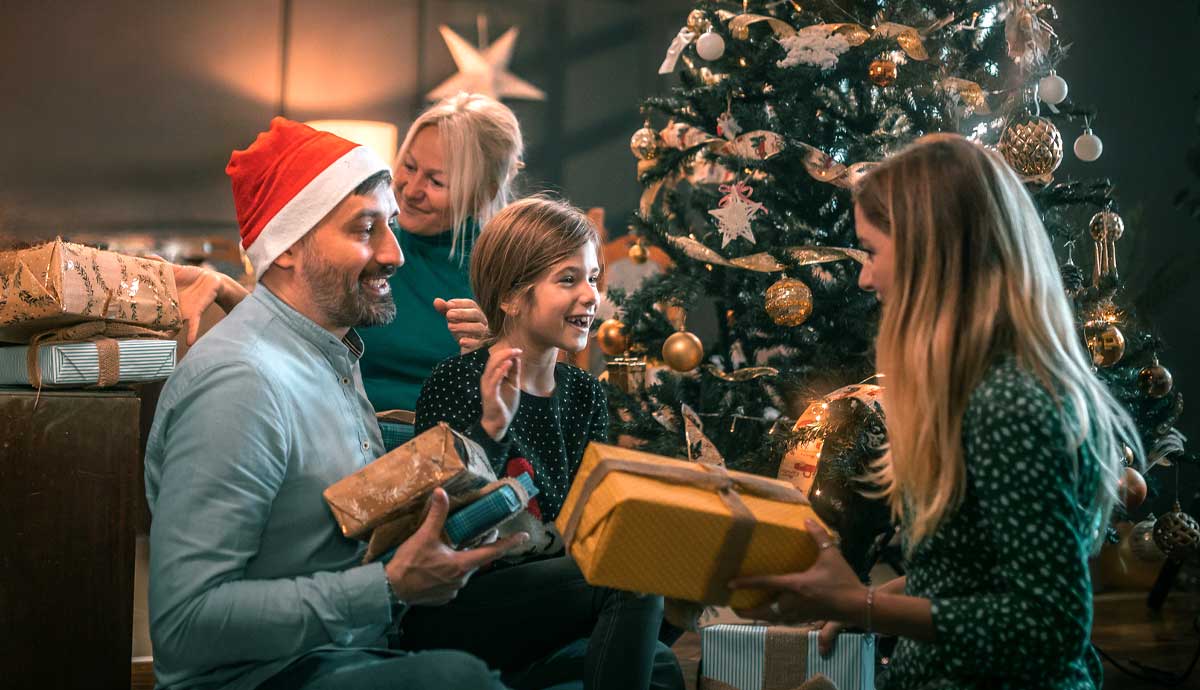
Giving gifts is a long-standing tradition that is closely associated with the Christmas period, one that goes far beyond the widespread commercialism and clever marketing campaigns associated with Santa Claus. While Christmas gifts are most closely associated with the Christian celebration of the birth of Jesus Christ, mirroring the gifts given to Jesus by the Three Wise Men, (as depicted traditional nativity scenes and plays across the world) the traditions of Christmas gift-giving today are also a blend of cultural developments from various point in history, including Roman, early Christian, and Victorian times.
Indeed, for many gift-giving is as much about performing middle class societal expectations as it is about helping those most in need during the darkest months of the year. Read on to learn more about this entrenched practice that punctuates the festive season.
The Saturnalia Holiday in Ancient Rome

Even before the advent of the Christian narrative surrounding Christmas, gift-giving was adopted by the ancient Romans around the time of the winter solstice, marking the end of the calendar year. The Saturnalia holiday took place from the 17th to the 23rd of December, in honor of Saturn, the Roman god of agriculture. Along with feasts and parties, Romans exchanged small gifts on the 19th of December, a day known as Sigillaria, such as figurines made from wax and pottery, candles, combs and dice cups.
Gifts were often intended to amuse or terrify the recipient, acting as a form of entertainment. Meanwhile, when the new year turned, Romans would exchange laurel twigs, nuts and gold coins to honor Strenia, the goddess of health and well-being.
The Three Wise Men

It was during the 4th century that the Christian narrative of the Magi, or Three Wise Men, first emerged, as pagan rituals gradually made way for the onset of widespread Christianity. According to Biblical scripture, the Magi gave the newborn infant Jesus Christ the gifts of gold, frankincense and myrrh on the 6th of January, a day now known in Christian practice as The Epiphany.
It wasn’t for many centuries that the actual birth date of Christ on the 25th of December became the day for exchanging and unwrapping gifts amongst friends and family. The nativity has been popular as a young children’s Christmas performance for several centuries, which many come to associate with the act of giving presents at Christmas.
Saint Nicholas

Another key influence on gift-giving from Christian history is the narrative surrounding the 4th century Christian bishop Saint Nicholas, who later evolved into the popular children’s character of Santa Claus or Father Christmas. St Nicholas became known for performing miracles, acts of kindness, and bestowing anonymous gifts upon those most in need. Following on his benevolent example, gift-giving became common practice during winter time for Christians, particularly on Christmas Day.
Over time, Saint Nicholas evolved into various secular characters, including the Dutch Sinterklass, whose festival became about aiding the poor and destitute. These traditions were carried over to the United States by former Dutch colonists, paving the way for Santa Claus.
Medieval Gifts

Giving gifts during winter time was common practice in Europe during the Medieval era. King Henry VIII in particular was fond of receiving gifts from his subjects, such as domestic ornaments or food. Throughout the 16th century, gift-giving during the Christmas period became a popular practice across wide sections of European society. Such gift-giving practices were predominantly focused on children, and the working classes who were often given life-sustaining food and drink from wealthier members of society during the notoriously difficult winter months.
Creating the Magic of Christmas Day

By the 19th century, the focus on exchanging presents on Christmas Day, along with feasting and merriment, had become common practice across much of the Western, Christian world. Stories such as Charles Dickens’ A Christmas Carol and Clement Clarke Moore’s The Night Before Christmas captured the anticipation for Christmas Day so prevalent during Victorian times, and these still remain popular classics today.
Over the following centuries as capitalism boomed, gift-giving has become a period of mass consumption and aggressive marketing campaigns, making it easy to forget where the practice first began. As society has become increasingly secular, the act of gift-giving has for many lost the spiritual significance it once had – instead many tend to lean towards a ‘give-to-receive’ mentality. But it is worth remembering that the custom of gift-giving has deeper roots than commercialism, ones that tie in with pagan rituals, Christianity, and, perhaps most significantly, the concept of giving to those most in need during one of the most challenging times of the year.










